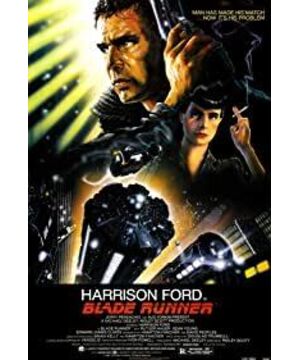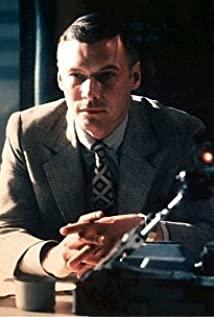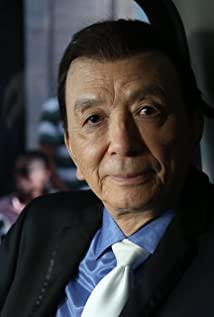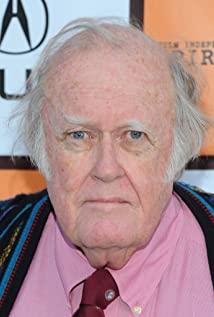Modernity and the Will of Director
Revisiting "Blade Runner" after a long time, in addition to the loneliness when I first looked at it, the impression of eternal decay and damp and dimness above the loneliness, I also feel that the person who is the purpose is bound to go from life to death. The confusion encountered is a kind of sublation and epiphany under the incomprehensible completeness.
From the initial copy test, to Dyke, to the old version of Rachel and Tyrell, to the male and female copyists following Roy, to the final Dyke and Roy, Scott controlled the characterization and Individuals who come into contact with each other are specific, clear, and subtle without exception. They are all individual-to-individual connections. Such private bonds interact slowly and have a long history. The narrative space allows the viewer and the person in it to fully appreciate and reflect.
Looking at Roy and Dyke, they are undoubtedly appearing in the story with a strong purpose. One is to continue their lives regardless of the cost and consequences, and the other is to maintain the supremacy of natural persons to hunt down clones. . The two of them face the environment, the changes that each other and the others produce-whether it is a drastic change or a gentle change, all are derived from the future reality created. Based on the realistic meaning contained in this transformation, in the pace of the forward movement, it can roughly be transformed into an imagination and poetry that allows the viewer to feel the reality of the future, not just a science fiction story. This confusion and final choice of self-transformation is the true self-improvement of a person. Simply put, it is a process of discovering oneself and pursuing value. But just like the handed down lines improvised by Rutger Hauer (1944-01-23 to 2019-07-19) at the end of the film, no matter how much glorious people experience Moments will be lost in time, just like tears in the rain, they will eventually blend in with each other and are indistinguishable. Dyke and Roy went from chasing and anti-churching to the final gaze and reconciliation. The interaction between the two is nothing more than a journey of pursuing oneself and finally disappearing into each other.
From this perspective, there is no essential difference between Dyke’s pursuit of Roy, which is similar to the hunting of predators in nature, and Roy’s anti-hunting of Dyke. It is found that the truth of each other resides in the simultaneous progress of two homogenous behaviors. , Self-discovery and value realization will inevitably coincide, and once this point is realized at the same time, the ending of Roy's rescue of Dyke must be full of surprises and ambiguous. Surprise lies not in the act of saving people, but in self-discovery: Although Roy is a clone, he suddenly has the same empathy as a natural person. If empathy can be confirmed as a natural person, this act of saving lives is based on reality. From the perspective of accepting oneself as a dying clone, it is undoubtedly the pursuit of the superego, and the realization of the superego must at least surpass the existence of a natural person. Therefore, saving Dyke is not only the realization of Roy's self-worth, but also the gap between the replicator and the natural person has been leveled by Roy at this time, and thus has transcended. Inquiring into Roy’s behavior in detail, there is a structural tragedy in it. When Roy realizes this, the end is approaching. People can’t help but sigh that the poetry delayed by his good deeds at the end of life is just from Roy’s thoughts. The failure to become a natural person comes.
And Dyke, who was deeply shocked by this scene, discarded his responsibility as the defender of the order of natural persons, and began to completely turn to the maintenance of clones. From the internal meaning of the narrative, this transition seems to be due to the two killers/prey. The identity was reversed and the end of purpose (Roy's death) caused Dyke to lose his position as the savior, which in turn formed the savior/killer opposition split. But in fact, the pursuit of killing led to a fateful duel between the two, and it was Dyke’s that bridged it. As a blade killer who specializes in killing clones, the self-discovery and value realization of the multi-sense. Tracing back to the source, if Roy’s empathy is due to the possibility of empathy generated by the indescribable natural person’s empathy when saving people, then Dyke, as a Blade Runner, transcends Blade Runner’s superego transformation even more. complex. This complexity should probably be attributed to the fact that Roy’s experience is actually the incredible spectacle of the universe seen by a natural person as a cloner, which is far beyond the capabilities of any natural person, resulting in {person} in the formal sense The act of surpassing natural people and then saving Dyke, and the sudden acceptance of his own destiny by Enron, made Dyke, who experienced this astonishing transformation, as if witnessing the "Orion constellation along the blazing universe no less than what Roy saw." The battleship, the C-ray shining in the darkness near the gate of Don Wyther is a magnificent spectacle and an equal spectacle. Undoubtedly, this is also the probability that Roy’s empathic empathy produces, and for most natural or copy people, this kind of experience is unattainable. Of course, the probability that can be felt is extremely scarce. Compared with the tragic Roy, Dyke's subsequent decision will inevitably be the indispensable aftermath of the tragedy.
This almost simultaneous transformation of the two, the inevitable encounter between the two under the framework of the genre film, except that the theme of "Blade Runner" obviously cannot fall on Dyke or Roy only, the transformation is deep underneath. Self-discovery and value realization also have something in common: Dyke, who is about to fall to the ground by climbing a high beam with only one hand, is dying. This is an image of fact without any symbolic meaning; Roy, who looked down at the clone as if he were a natural person, was also dying because the built-in lifespan was about to expire. This is also an image of fact, without symbolic meaning. The lives of the two creatures in the rain are fragile and tenacious. If they can be regarded as "poetic dying", then the source of its "poetic" is first of all "truth". But the power of the movie certainly does not stop at the reality of the image. In "Blade Runner", this fateful showdown is inevitable, but when Scott put it in the continuous rain, he can find The mood of dying at this moment far exceeds the "real" it expresses. For people in the text of the movie or in the real reality, the completeness of a person is reflected in the same inevitable beginning (birth) and end (death). Tears in the rain are the end, an image that life will eventually pass away. It is a footnote to death; the white dove in the dark night is a concrete manifestation of the ascending soul, whether in the real reality or in the film text, the probabilities of people are a kind of self-reflection under the completeness of being placed in the matter.
At this level, the tears in the rain represent Roy’s past, and the white dove in the night symbolizes Dyck’s future. Together, they express an extremely hardcore drama core: how to accept oneself after facing the destiny of inevitable failure, How to face the inevitable end of life after accepting yourself . Here, living with empathy and the inevitable death are obviously correct and cannot be falsified. This is because the complete rational cognition of man always wants to transcend the boundary of man’s probable experience to know man’s self. unable to generate Discovery 's purpose contradiction (antinomy).
So far, from the narrative point of view, it is actually difficult to continue to question the purpose of people. The essence is that modernity itself is isolated by experience. If "Blade Runner" can see the reflection of the future era on the back of the character's destiny, it is based on science fiction, in addition to the objective reality created, if it is more helpful to extend the viewer's "reality of life at that time" If you imagine “ism”, Scott’s subjective image construction may contain answers. In this direction, to explore the cyberpunk aesthetics of "Blade Runner" that laid the foundation for cyberpunk aesthetics. All the impressions that circulate in the eyes will always be a dark, dazzling urban landscape, full of iron and steel. The neon flows, as if it really reflects Bentham’s imaginary prison, and the Foucault-style invisible super-manager-like searchlight hovering over the house where there are hiding places everywhere. The so-called fashionable definition can be summarized as: High-tech, low life. Imagine that in the future with highly developed productivity, more and more commodities that cannot be completely consumed, more and more buildings that may be useless, more and more garbage that is too late to be recycled, etc., may have become the main labor force in the biochemical industry. The future of the city is still unable to maintain the “beauty of order” that should be organized and lined up in the city. Under the iron law of entropy and the closed system of movie text, order will gradually become disordered, and the “beauty of nature” will be irreversible. To change. Here, it may be possible to summarize the "essential truth" of cyberpunk aesthetics: the disordered "natural beauty" of low life inevitably caused by high technology . Since there is an intellectual law in it, we can further ask, what happens when the law of increase in entropy of the underlying logic of cyberpunk aesthetics reaches the heat death state of the inferential limit? Regrettably, the heat death state derived by the theory is only the end of the idealization of the model, and it will not actually come. In this way, cyberpunk aesthetics should not have an end. The means of cyberpunk are the purpose of cyberpunk. Living in the world of "Blade Runner" is like living forever in a game called cyberpunk. It is the same in a dream that will never wake up, and further corrections can be made to its "essential truth", namely: "natural beauty" in eternal disorder . (This can also explain the question that the urban landscape still has order in the opening chapter)
Exploring the true image of science fiction based on future reality, mixing the inevitable completeness with the rare probability, and comparing the symbolic symbolism to the copying person and the natural person. It is conceivable that the "essential truth" of cyberpunk aesthetics may be analogized. The "essential truth" of human beings. Cyberpunk-Cyberpunk takes care of its own purposeless existence. It may be the natural ultimate form of the commodity exchange society under capitalism, it may be the intermediate transition of some ultimate social form, or it may be a part of the historical cycle... . And. After all, it shows the inclusive "appropriate" when in line with each copying person/natural person's own inquiry. The judgment behind this allows you and my viewers to come to an epiphany when faced with truly scarce inner discoveries in ordinary lives, and to bloom infinitely varied, delicate and diverse probable gestures, so as to completely change and understand themselves. In this regard, the flow of order beauty to natural beauty in the future imagination, the unity of completeness and probability under the flow, and the reproduction of the essence of human/natural person in the unified, as the science fiction movie "Blade Runner", relying on images The constructed scientific imagination expands the possible future and the present realistic imagination. It contains the purposefulness of what a person is. It is worthy of the name of one of the greatest science fiction movies in history, and even if it still exists underneath it forever The existential crisis of doubt is probably a problem that cannot be solved by the film, and it needs everyone to solve it in their hearts.
View more about Blade Runner reviews











